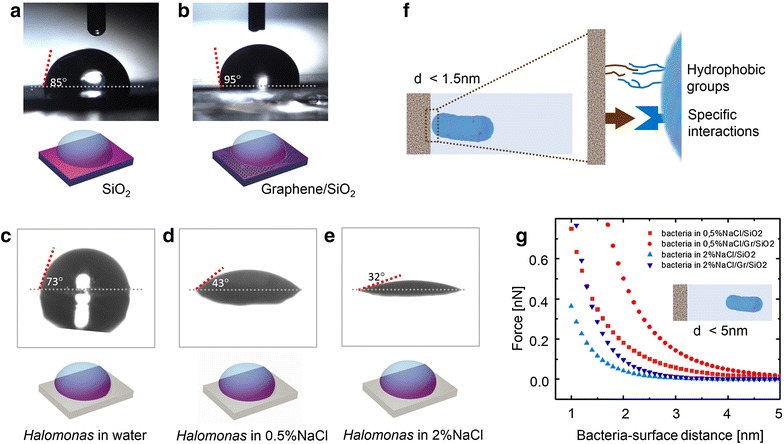Fig. 6.

Hydrophobic-hydrophilic nature and electrostatic force between graphene-coated samples and bacteria. Images of contact angle measurements using milliQ water in contact with SiO2 (a), graphene-coated SiO2 (b), lawn of Halomonas spp. CAM2 previously suspended in water (0 % salinity) (c), lawn of Halomonas spp. CAM2 previously suspended in 0.5 % NaCl saline solution (d) and lawn of Halomonas spp. CAM2 previously suspended in 2 % NaCl saline solution (e). Diagram (f) shows a schematic representation of short-distance interaction (<1.5 nm), originated by physico-chemical forces (like the ones related to surface energy other specific interactions) that are relevant for bacterial adhesion. g Theoretical calculations of electrostatic force as function of distance between bacteria and surface (SiO2 and graphene-coated SiO2) confirm repulsive interaction that increases when material is coated with graphene
